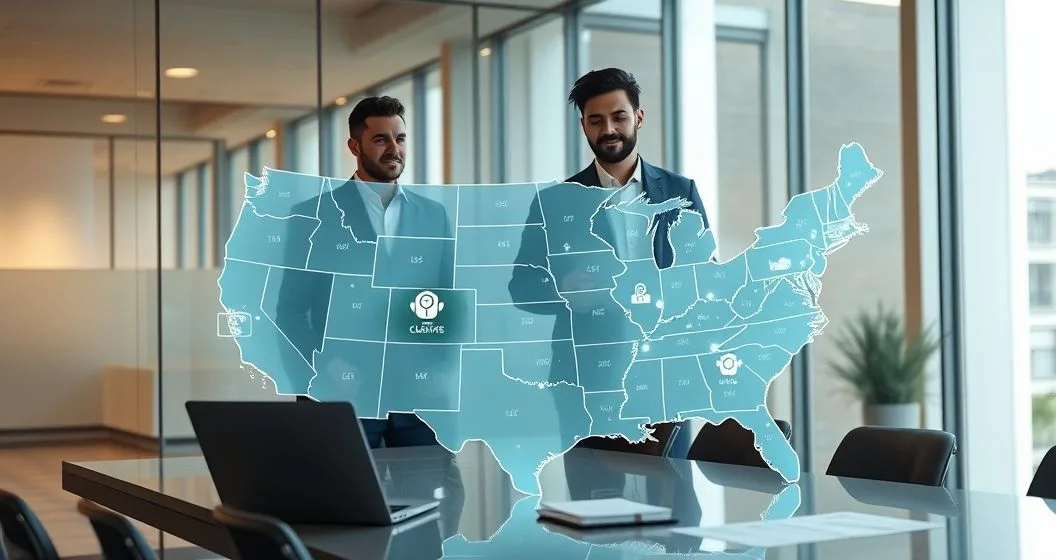Background
Nexus has shifted from a mostly physical-presence standard to a broader, activity-based test. The U.S. Supreme Court ruling in South Dakota v. Wayfair, Inc. (2018) allowed states to require out-of-state sellers to collect sales tax based on economic activity in the state rather than physical presence. That decision is the primary driver of modern economic nexus rules.
How nexus is established (common triggers)
- Physical presence: A storefront, office, employees, contractors, or inventory stored in a state. Remote employees who live and work in another state can create nexus for the employer.
- Economic presence: Many states set sales or transaction thresholds (for example, $100,000 in sales or 200 transactions, though thresholds vary by state). Meeting a state’s threshold can create nexus even without any physical presence.
- Digital activity: Recurring sales of digital goods or services, targeted advertising, affiliate programs, and hosting infrastructure located in a state may factor into nexus analyses.
- Marketplace facilitators: Platforms that facilitate sales (Amazon, Etsy, etc.) may be required to collect and remit sales tax on behalf of sellers under state marketplace laws.
How this affects service-based and digital businesses
Service and digital businesses—SaaS, freelancers, digital agencies, online course creators—often assume they’re exempt if they lack a physical location in the customer’s state. That assumption is risky. Economic nexus rules and marketplace-facilitator laws mean you may need to register for a seller’s permit, collect sales tax on taxable services or digital products, and file returns in states where you meet thresholds.
Practical examples
- A New York–based SaaS company sells subscriptions nationwide. If it exceeds a state’s economic threshold in California, it must register for a California seller’s permit and begin collecting sales tax on taxable subscriptions (state rules on taxing SaaS vary).
- A freelance designer who visits or routinely works for clients in a particular state can create nexus through physical presence or recurring services performed there.
Steps to assess and manage nexus
- Map customer activity by state. Track sales, number of transactions, and where work is performed.
- Review each state’s nexus rules and taxable service definitions. Thresholds and what’s taxable differ by state—do not assume uniformity. (See IRS guidance on sales and use tax.)
- Register early. If you meet a threshold, register for a permit and start collecting tax from the registration date or the date required by that state to avoid penalties.
- Use automation. Sales-tax engines and accounting integrations reduce errors and keep tax rates accurate.
- Consult a tax professional. Multistate nexus compliance is complex and facts-specific—get tailored advice.
Common mistakes to avoid
- Relying on a physical-location-only view of nexus.
- Ignoring marketplace-facilitator and marketplace-seller rules.
- Poor recordkeeping of where services are performed or where customers are located.
- Waiting until an audit to register—back tax, interest, and penalties can be substantial.
Professional perspective
In my practice advising service-based and digital businesses, the most common issue I see is under-tracking customer location and failing to test against state thresholds quarterly. Early detection and registration often save businesses from steeper audit exposure and costly remissions.
Quick compliance checklist
- Run a quarterly nexus review by state.
- Keep invoices and client-location records organized.
- Confirm whether your products or services are taxable in each state.
- Determine who collects tax for marketplace sales (you or the platform).
FAQs
-
Who decides whether a product or service is taxable?
States decide. Taxability of digital goods and services varies widely—check state guidance. -
Do all states follow Wayfair economic nexus rules?
Most states implemented post-Wayfair economic nexus laws, but thresholds and definitions differ. Always check the state’s revenue department rules.
Internal resources
- For remote sellers and recent legal changes, see our guide: Nexus Rules for Remote Sellers After Recent Court Decisions.
- For SaaS-specific considerations, consult: State Sales Tax Nexus for Remote SaaS Companies in 2025.
- If you’re a freelancer, this primer is helpful: Nexus Basics for Remote Freelancers: Where You Owe Taxes.
Authoritative sources and further reading
- South Dakota v. Wayfair, Inc., 138 S. Ct. 2080 (2018).
- IRS — Sales and Use Tax (business guidance): https://www.irs.gov/businesses/small-businesses-self-employed/sales-and-use-tax
Professional disclaimer
This article is for educational purposes only and does not constitute tax advice. Nexus rules are fact-specific and vary by state—consult a qualified tax professional or state revenue department for guidance tailored to your business.



